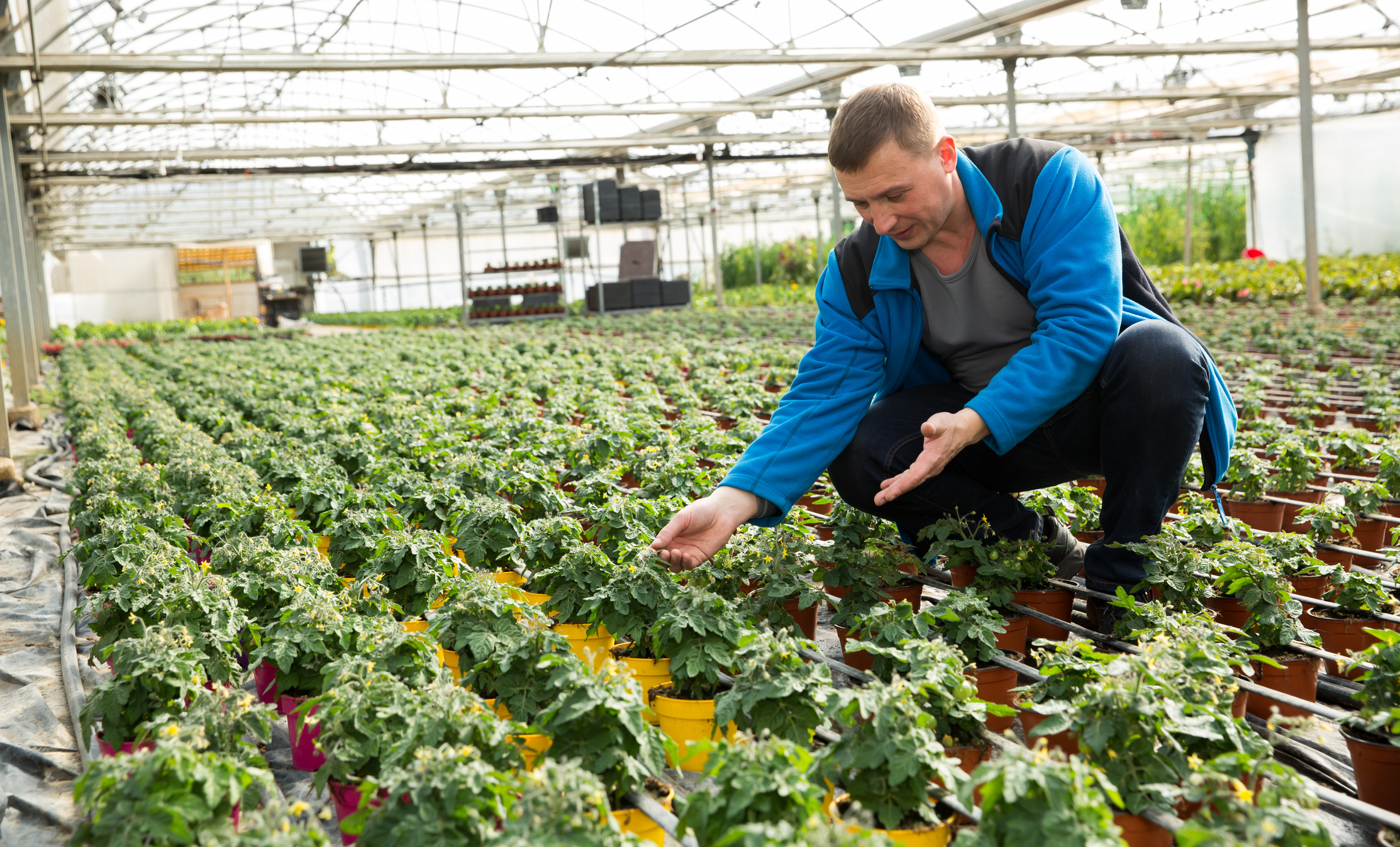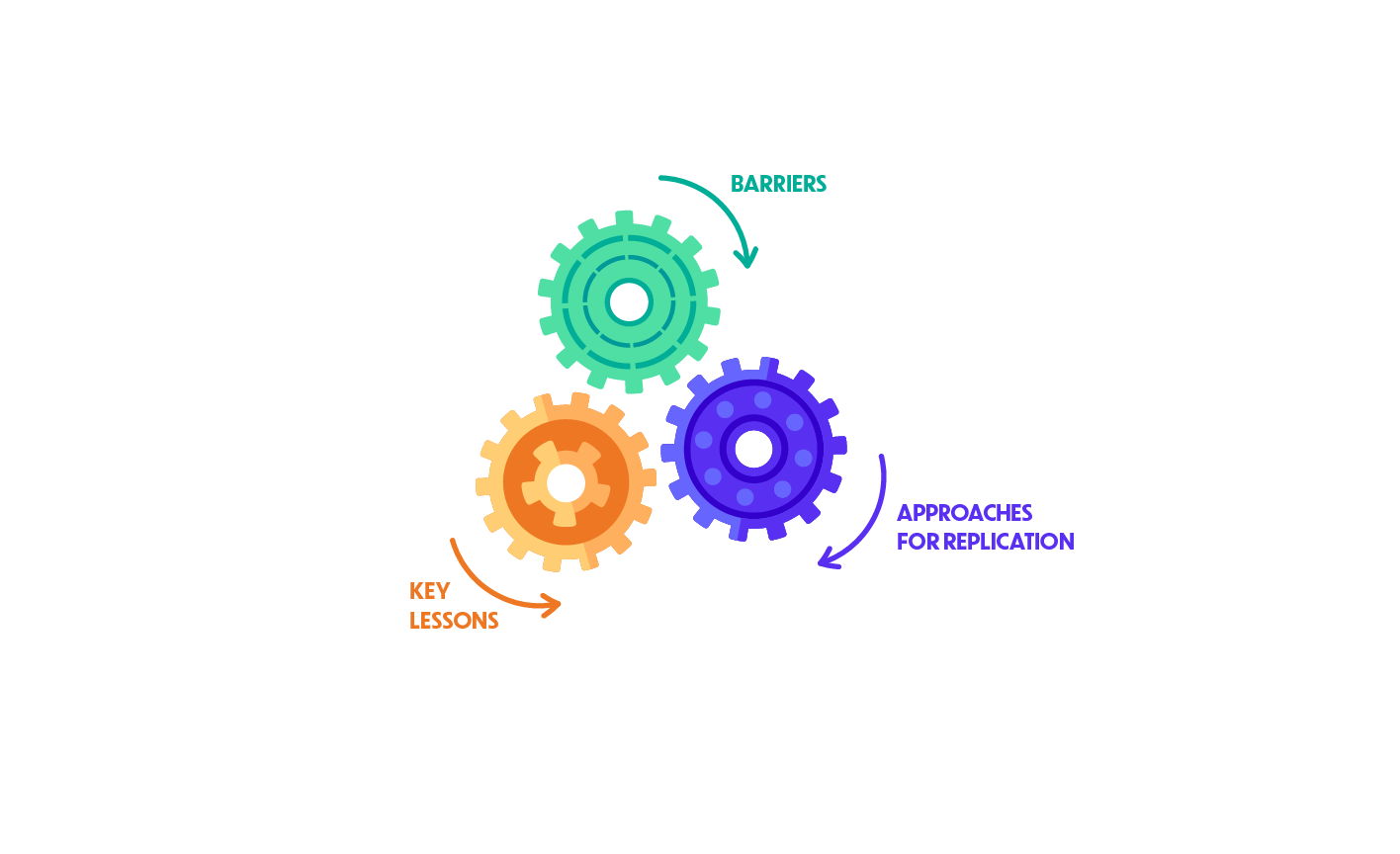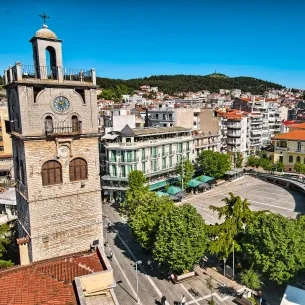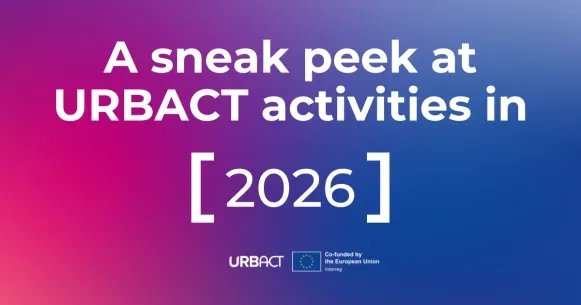
Introduction
Cities are increasingly seeking ways to become carbon neutral, climate-resilient, and biodiversity-rich. To support this, they can take advantage of their ample political power and less complex governance structure compared to the central or regional governments, to implement climate change mitigation and adaptation plans at the local level.
Cities need to develop mitigation plans for their transition to climate neutrality as well as adaptation plans to cope with the enhanced impacts of climate change. In both cases, they also need to be Climate Smart to exploit digital technologies in such sectors as transport, urban planning, energy distribution, and others.
This chapter exemplifies the factors above by referring to UIA projects related to emerging green sectors, as implemented in cities in the European Union. These UIA projects are examined in terms of their objectives, the barriers they have encountered, the key lessons that are emerging in terms of the green sectors, and the approaches to be replicated and scaled. Finally, key messages are drawn regarding the emerging green sectors.
This section builds on the analysis of (a) the responses of UIA cities to a distributed survey (b) the interviews and hearings made with (b1) several cities (and their representatives) and (b2) organizations with policies related to green sectors, contributing to this process either as key witnesses or Sounding Board members.
UIA promotes several projects linked to emerging green sectors, facilitating roadmaps towards climate neutrality and supporting differentiated climate change mitigation and adaptation plans. The projects introduce innovation, not limited to the use of novel technologies, but also supporting new governance schemes and participatory approaches for the involvement of citizens.
The projects include Paris (FR) and Barcelona (ES) that promote climate-friendly urban planning, aligned to such climate pressures as urban heat and heatwaves; their approach relates to the conversion of open schoolyards to cool islands acting also (in the case of Barcelona) as climate shelters. In Manchester, urban green infrastructure and nature-based solutions are applied to combat urban over-heating and flooding. In Amsterdam, smart blue-green roof technology is promoted to facilitate smart water management and mitigate heat waves. In Sevilla, adaptation to climate change is supported by recovering street life through an ecosystem based on three pillars, namely refreshing facilities, an underground gallery, and an a-bioclimatic amphitheatre.
In Viladecans, energy transition exploits new local tools such as energy supply, energy currency, energy savings services, deep energy renovation investments, and renewable energy production. Lappeenranta focuses on modern construction engineering to mitigate greenhouse gases emissions, whereas Brussels applies an urban transportation modal shift given the reduction of the use of cars and vans. In Gothenburg, a local energy grid based on photovoltaics, heat pumps, and the wind was developed to reduce peak loads and the use of fossil primary energy. Finally, Cuenca is prioritizing measures for sustainable forest exploitation as well as the development of a local bioeconomy, whereas Ostrava develops smart fertilizers in support of urban greenery, which in turn improves air quality.
Table 1 lists the UIA projects/cities assessed in terms of the use of green sectors in the city planning and functions; a brief referral to the green sector(s) per UIA project is also given. Overall, a systemic effort for the integration of green sectors has been recognized, through a wide range of plans and tools relating to varying climate pressures or urban needs, while similarities have also been recognized, given the urban character of the plans. A common element of the plans was their effort to involve city residents in the co-design and selection of interventions in the overall field of green sectors, a fact of considerable usefulness for the residents to acquire a sense of ownership of the interventions.
In brief, the interventions promoted by the UIA cities (for both adaptation and mitigation) include multifunctional urban parks, nature-based solutions, smart fertilizers, urban drainage systems linked to green roofs, eco-innovative products, energy efficiency, deep renovation, and smart energy systems, as well as innovative business models and governance approaches developed to realize these. In Table 2, a presentation of the emerging green sectors supporting mitigation and adaptation plans is given for selected UIA projects.
|
City |
Green Sectors |
Project challenge |
|
Amsterdam (NL)
|
Nature-based solutions Blue-green roofs |
Adaptation to flash floods, higher temperatures and increased droughts |
|
Barcelona (ES) |
Climate-friendly urban planning (green and blue infrastructure at open spaces school buildings) |
Adaptation to high air temperatures and heatwaves |
|
Brussels (BE)
|
New urban transportation model for the reduction of the use of cars and vans in the city |
Mitigation of carbon dioxide emissions |
|
Cuenca (ES)
|
Forest exploitation and bioeconomy |
Prevention of fire risk, forest management and reduction of air pollution |
|
Gothenburg (SE) |
Energy efficiency and smart energy management in public infrastructure and housing sector; Green Bonds[1] |
Mitigation of carbon dioxide emissions |
|
Lappeenranta (FI) |
Production of high-value material to replace concrete
|
Mitigation of carbon dioxide emissions – Waste reduction |
|
Manchester (UK)
|
Urban green infrastructure and nature-based solutions |
Adaptation to urban overheating and floods |
|
Ostrava (CZ)
|
Smart fertilizers for urban greenery |
Reduction of air pollution |
|
Paris (FR)
|
Climate-friendly urban planning (eco-innovative products and nature-based solutions) |
Adaptation to high air temperatures and heatwaves |
|
Sevilla (ES)
|
Maintaining public spaces cool while reducing energy consumption through the use of water and air as cooling agents |
Adaptation to high air temperatures |
|
Viladecans (ES) |
Energy Transition based on energy currency, energy savings services, deep energy renovation investments, and renewable energy production. |
Mitigation of carbon dioxide emissions |
Τable 1. The UIA projects assessed in terms of the use of green sectors in the city planning and functions.
Overall, a new business ecosystem related to green sectors is being shaped. This ecosystem includes all types of enterprises, from micro to large ones, a fact that gives space to start-ups and improves employment prospects in green jobs. Such jobs are created at all levels: they may be architects, engineers, and scientists with knowledge for bioclimatic and energy-efficient buildings, passive cooling and the use of cool materials for buildings, pavements, roads, energy experts in the field of smart energy systems for energy retrofitting of buildings, experts in nature-based solutions, financial experts with specialization to renewable energies and climate neutrality, etc. They may also be groundkeepers for maintenance and repair works. In addition, in most cities, the increasing market demand for green sectors has resulted in a trend for consultancies and contractors specializing in this area.
[1] An amount equal to the net proceeds of the Green Bonds will finance or refinance, in whole or in part, investments undertaken by the City of Gothenburg that promote the transition towards a low-carbon, climate change-resilient and ecologically sustainable society.
https://finans.goteborg.se/wpui/wp-content/uploads/2019/09/City-of-Gothenburg-Green-Bond-Framework-2019-09-12-1.pdf

1. What barriers do cities face in supporting emerging green sectors?
Barriers are defined as obstacles that can be overcome with coordinated action, creative management, change of thinking, prioritization, and related shifts in resources, land uses, and institutions. Overcoming barriers requires political will, social support, resources, and skills.
The examination of the UIA projects demonstrates how the uptake of green sectors in different European cities is influenced by a variety of barriers and their underlying conditions across several broad domains.
Organization-related barriers often come from the size of the city and its limited human resources to run wide-scale projects, as was the case of the Cuenca UFIL project. In this case, partnerships with national and regional bodies may be supportive, although they require considerable time for effective cooperation patterns to develop. Another barrier is inertia to change municipal management practices to cope with the characteristics of urban regeneration projects or procurement procedures that are innovative. Furthermore, “silos” between different municipal departments are perceived as barriers to green sectors.
In Amsterdam, a barrier for the RESILIO project was the limited link of the blue-green roofs project in its initial phases, to the overall city strategy. In Brussels, a barrier in the initial phases of the CAIRGO BIKE project was the high number of participating entities. In Cuenca, a barrier was the small size of the city and the consequent need to structure the earliest possible working cooperation framework with the national and regional governments. In Barcelona and Paris, a barrier for the GBG_A2CC and OASIS projects was the establishment of the appropriate communication channels to ensure citizens’ and stakeholders’ engagement. Finally, for the projects deployed at the local scale or at the school level, the covid-19 pandemic was a considerable barrier.
Technological barriers originate from the lack of adequate knowledge on technological developments in emerging green sectors. In Lappeenranta and Ostrava, a barrier to the URBAN INFRA and the CLAIRO projects respectively, was the lack of trained workers to lead the transition to green sectors. In Paris, the limited acquaintance of the municipal personnel to green sectors was a barrier for the OASIS project. In Seville, the barrier was the incorporation of new technical requirements in established procurement processes. In Barcelona, the barrier was to identify innovative solutions that would suit both uses of schoolyards: during the school period and during the open schoolyards period. Life-long training and reskilling programs can gradually remove technological barriers.
Financial-related barriers relate to the limited capacity of communities and/or businesses to undertake costs. Tax incentives, business grants, green bonds, soft loans, reduced cost of public services, reduction in rent and/or business rates, etc., may be necessary for building momentum. In Manchester, a barrier for the IGNITION project was the request from businesses for grants to fund business development activities or to purchase equipment that they were unable to fund. In the Lappeenranta project, a barrier was the lack of culture on green sectors within companies and the limited funding available during the initial phases of the transition of microenterprises towards green sectors. In Brussels, a barrier was to make access to cargo bikes easy for citizens as well as businesses, as demand was high across the country and supply chains were under pressure. In Viladecans, barriers in the Vilawatt project referred to the low income of communities to cope with the required deep energy renovation of residential buildings as well as the high-risk perception of the private sector towards investing in energy retrofitting.
Regulations-related barriers refer to the willingness of a municipality to promote green infrastructure, but existing urban plans and regulations, zoning codes, building standards, etc. complicate or even restrict such possibilities. In the Gothenburg FED project, a barrier for the implementation of the project was the need to exempt a city area from regulation in order to develop the local energy market. In Paris, the high urban density of the city was a barrier for the OASIS project due to the limited availability of space. In the Lappeenranta project, strict regulations in the construction sector were a barrier to the experimentation needed for the innovative project.
Another barrier may be the lack of political support from the side of the municipality or lack of continuity in terms of long-term planning due to changes in the municipal political administration. This barrier also applies to regional and national governments. In practically all examined UIA projects in this chapter, political support was provided by the city authorities, although not always from the beginning of the project and with the same strength.
Market inertia, practically the reluctance of the private sector to promote investments in the field of green sectors – for instance because the investment may not be their core business or they do not recognize a profitable market – is a strong barrier. In the case of Lappeenranta, barriers referred to the hesitation of companies to make investments without guaranteed returns as well as due to the concern that the investment could remove the attention away from the core business of the companies. A general finding is that such barriers can be overcome because of the overall European and international shift to green sectors. Recent studies[1] at the European level, demonstrate that the field of green sectors is gaining strong public interest while it is a growing and profitable market.


2. What key lessons are emerging in relation to supporting new green sectors?
From the analysis of the UIA projects from the perspective of green sectors, several key lessons are emerging:
In Paris, Barcelona, Seville, Viladecans, and Lappeenranta among others, high-level political support facilitated the implementation of the projects as well as their sustainability upon completion. In these cities, long-term city plans for the adaptation to climate change and the shift to a circular economy are already under implementation, thus securing continuity of efforts regardless of any change to the local administration.
The overall policy framework of the European Union supports the integration of green sectors to urban planning and urban life in general. However, the degree of integration depends on the regulatory framework of the municipality itself. The potential for the integration of green sectors to urban planning is higher for cities that have developed, and deployed climate change mitigation and adaptation plans such as Amsterdam, Barcelona, and Paris or have an overarching strategy supporting climate neutrality as is the case for Manchester and Viladecans. An overarching strategy also provides space for innovation, a fact that facilitates the experimentation of technologies linked to green sectors as is the case for Lappeenranta with the circular economy materials and Gothenburg with a novel district-level energy system, integrating electric power, as well as heating and cooling.
In terms of regulation, it is important to remove any obstacles embedded locally. In Gothenburg, the project’s demonstration area is exempted from the law of concession for electricity distribution, providing the opportunity to develop a local energy market. In Barcelona, a cascading process was applied for the integration of blue-green-grey infrastructure in schools; this was achieved through the cooperation of a city organization with open market architectural firms for the design of the regeneration plans for the participating schools.
New governance at the city level is needed to support green sectors, with the main objectives being: (a) promote strategic planning (b) establish a long-term organizational horizons (c) support cross-departmental cooperation (d) ensure participatory governance, (e) integrate innovation and (f) conduct monitoring and evaluation.
Barcelona has developed an organizational structure enabling communication between different departments and city organizations regarding the project and its objectives; most importantly, the project was linked to running projects, in an effort to fine-tune actions and avoid duplication of efforts. At the completion of the UIA project, the said organizational structure led to the upscaling of the project through its integration to a running city program on open schooling.
In Cuenca, the small size of the municipality which could be considered as a barrier for the implementation of the UIA project, led to an organizational restructure that gave space to the outsourcing of services. In addition, an action plan for Cuenca’s forestry sector was developed in collaboration with different levels of administration (national, regional, provincial). Finally, in Viladecans, an innovative Public-Private-Citizen Partnership at the local level was created to manage new local tools such as energy supply, energy currency, energy savings services, deep energy renovation investments and renewable energy production.
Green sectors can be leveraged for the benefit of all, through international city-led projects based on the exchange of technologies and innovation and the sharing of experiences, also in terms of financing the project upon their conclusion. In line with the above, Barcelona and Paris have developed a collaboration framework for the joint exploitation of their UIA projects, whereas Amsterdam has been linking with Manchester and Seville.
Moving from awareness of green sectors to understanding their practical applications is a priority issue to be addressed through knowledge transfer at the local scale, presumably through demonstration activities and exhibitions. Barcelona, Ostrava, Paris, and Seville by being open-air, have managed to effectively demonstrate their interventions to the city residents. Alongside these, Manchester has created a Nature-Based Innovation Centre at the University of Salford campus to act as a visible demonstrator and living test lab of the urban green infrastructure approach to combatting climate change. In Lappeenranta, the University of Technology supports the transfer of knowledge to students, on circular economy materials and novel development methods to produce recyclable and functional urban construction products.
Gothenburg is an interesting example as it has managed to integrate new knowledge in the city’s operations; a local energy grid based on photovoltaics, heat pumps, and wind was developed to reduce peak loads and the use of fossil primary energy. In addition, Amsterdam has been promoting blue-green roofs, a technologically advanced intervention as compared to the typical green roofs. Barcelona and Paris gave space to a new type of urban planning, aligned to climate and its impacts. In both cities, new technical solutions (blue, green, and grey infrastructure) were promoted at the school level in order to develop cool islands within the cities’ web.
In Viladecans, the project promoted deep energy renovation investments in an effort to boost energy transition from fossil fuels to renewables. The project also linked city operations to the business sector, through the business incubator that was developed and operated throughout the project’s life. Alongside this, Cuenca has developed an urban forest innovation Lab to foster local economic development, through the promotion of innovative means for forest exploitation. The Lab also promotes incubation and acceleration of the business projects of local actors. As a result, several start-up companies (very small) are created and operate within the overall field of forest bioeconomy.
Exploitation plans linking green sectors with new financial instruments can develop strong momentum and may result in sustainable municipal plans or business solutions such as the business incubator in Cuenca and the energy currency in Viladecans. The transition of pilot projects in the field of green sectors to operational ones usually meets obstacles related to the lack of longer-term finance. To this end, Amsterdam has been using a municipal company (Waternet) to establish public to private partnerships, while Lappeenranta actively supports local industry to advance its circular economy products.
The level of investment needed to integrate green sectors in city life is considerable and requires, in addition to municipal funding, external funding sources for instance through the EU Cohesion funds or private investors. Return on investment is high, especially considering the contribution of green sector technologies to heat mitigation, flood control, air pollution reduction, and energy savings. Gothenburg has introduced green bonds to finance or refinance, in whole or in part, investments undertaken by the city that promote the transition towards a low-carbon and climate change-resilient society. Brussels focuses on making cargo bikes easy for citizens as well as for business, through sharing services, subsidies, group purchases etc.
In terms of the demonstration of the economic benefits of the green sectors, Manchester showcases nature-based solutions and their multiple benefits for the city and the public. Similarly, Ostrava presents the merit of urban greenery for ameliorating air pollution at a relatively low cost, while it integrates innovation in its project by using smart fertilizers in support of urban greenery.
Paris and Barcelona supported new models of micro-local governance, with methods for local actors’ participation and empowerment. Amsterdam linked the installation of green-blue roofs with the social housing program, thus demonstrating the capacity of a new green sector to support social interest and cohesion. In Lappeenranta, an innovative future vision, Urban City 2050, is developed in cooperation with the stakeholders. In Seville, the project promotes new business models and education programs for citizens and different stakeholders, including local craftsmen.
A process needs to be tailored for identifying skills shortages and gaps in capacity in the fields of climate change adaptation and mitigation, for instance in collaboration with the labour unions. Improvement of the skills of the labour force at the municipal level is necessary to deploy the potential of green sectors in municipal works and improve the capacities for their management. Barcelona, Paris, and Seville have worked in this direction in their UIA projects by skilling their personnel on the new needs for climate-friendly urban planning. Similarly, Cuenca and Viladecans recognized the limits placed by the size of the city in terms of human resources and promoted contingency plans (outsourcing of services to the private sector or working groups combining employers, entrepreneurs, and employees) accordingly.
Unlocking the economic, environmental, and social benefits of the green sectors requires bridging the gap between municipalities and the private sector. In Amsterdam, the business sector has been involved in the field of green roofs thanks to a national policy that provides subsidies to house owners and thus facilitates their installation. A mature market has thus been developed that may eventually shift towards green blue roofs. Similarly, in Lappeenranta, the collaboration between the City authority and the local industry supported the production of high-value material to replace concrete and thus expand the market towards a new green sector. Here the municipality assumed a key role in managing financial risk on behalf of the local business partnership. In Gothenburg, the business solution was developed along with the cooperation and energy exchange between several stakeholders. In Cuenca, business interest in the forest bioeconomy was stimulated, resulting in the founding of several small enterprises due to the UIA project.
The demonstration of plans and solutions in the overall field of green sectors shapes a positive perception of the public on their usefulness for climate change adaptation and mitigation as well as for improving quality of life at the local scale. Living Labs as developed in Amsterdam, Manchester, Ostrava, and Seville have served towards the cultivation of a new perception of the public towards green sectors. Similarly, the micro-management of open spaces in Barcelona and Paris have generated a sense of ownership at the local level, also leading to a positive perception for green sectors.

3. What successful approaches to supporting emerging green sectors can be replicated and scaled?
Although successful approaches differ from city to city, a set of common approaches for replication and scaling are:
Innovation is a catalyst for urban development and climate change adaptation. An interesting example that emerged in support of this is Gothenburg’s FED project; the example refers to their novel district-level energy system. Lappeenranta employed circular economy materials and novel development methods to produce recyclable and functional urban construction products. Innovation in Viladecans refers to a new energy currency adopted by residents and over 400 local shops and businesses in the implementation area and a local market based on deep energy renovation investments and renewable energy production. In Barcelona and Paris, innovation in green sectors has led to a holistic approach for climate-friendly urban planning.
The engagement of knowledge institutions is proven profound in nearly all the studied cases. In Amsterdam, the Innovation Lab is operated by the Amsterdam University of Applied Science. At the same time, the University introduces new knowledge from the project in its educational programs. In Ostrava, the three participating Universities carry experience on air pollution, urban greenery, and green fertilizers; tailored training and life-long learning are provided through the project’s Living Lab. Furthermore, new knowledge on green fertilizers has been included in the teaching of young university students in the respective scientific field. Universities were also involved in the projects of Brussels, Cuenca, Manchester, Lappeenranta, Paris, and Seville; in all cases, their participation supported the provision of expert knowledge on green sectors as well as deployed a platform for the transfer of knowledge to students.
Living and Innovation Labs for green sectors have acted as testbeds for interaction among stakeholders as well as the demonstration of innovation and knowledge. In Amsterdam, the Innovation Lab exposed professionals, the educational community, and the public to the blue-green roofs. In Manchester, the Nature-Based Innovation Centre is a visible demonstrator and living test lab of the urban green infrastructure approach to adapt to climate change. In Ostrava, the Living Lab examines new greenery and its impact on the most polluted district of the city. In Cuenca, the Urban Forest Innovation Lab supports an innovative training model for business development in the field of forest bioeconomy. The training takes note of the 21st-century skills, forest bioeconomy, and business and environmental innovation in forestry. Finally, in Manchester a dedicated support service for businesses within the green sectors is provided with skilled advisors.
Business incubators help start-up businesses grow and succeed by providing free or low-cost workspace, mentorship, expertise, access to investors, and in some cases, working capital. Cuenca and Viladecans are characteristic examples of successful approaches for replication and upscaling. In Cuenca, the Innovation Lab also supports incubation and acceleration of the business projects for new small and medium-sized enterprises in the overall field of forest bioeconomy, while in Viladecans the business and innovation centre has given space to businesses to take part in the local energy market.
Incentives may be necessary to boost an innovation action, especially in the field of emerging green sectors. Several types of incentives are recognized in the examined UIA projects: tax incentives, business grants, lower cost of public services, rent, and/or business rates. In Amsterdam, a tax incentive is provided – acting practically as a subsidy – for the promotion of the green roofs; the subsidy may be expanded for the blue-green roofs as well. In Cuenca, business grants are provided for new start-ups, while in Viladecans a new energy currency linked to energy savings provides an energy efficiency incentive to citizens.
Public-private partnerships reflect considerable momentum taken that they generate mutual advantages. This is clearly seen in Amsterdam as far as the cooperation on green roofs between the Municipal company Waternet and the private sector is concerned. In Viladecans, an innovative public-private-citizen partnership was developed at the local level to merge the Municipality to the local businesses and have the citizens of Viladecans as its members. In Brussels, the public-private partnership gives space to a new transportation mode (cargo bikes) and creates an environment for long-term consolidation to attract economic actors.
A critical precondition for the integration of green sectors in city life is the engagement of city residents in co-design and public space management. Characteristic examples are Barcelona, Paris, Seville; in all such cases, city residents are involved in the co-design of the interventions at the school or neighbourhood scales and also participate in local management actions. In this manner, they are exposed directly to the benefits of the green sectors, they acquire a sense of ownership of the projects’ results, and act as custodians of the public spaces. In Viladecans, the development of the public-private-citizen partnership involves the community from early stages in view of its engagement and empowerment.
The demonstration of project results in green sectors helps raise awareness amongst city and regional authorities, the private sector, and the public. Demonstration projects need to run continuously throughout the project and reveal the resulting benefits for the environment and local development. In Amsterdam, the smart blue-green roofs are presented to the housing community and the existing market on green roofs to promote its uptake, while in Manchester the benefits of nature-based solutions for heat reduction and flood control are publicly presented in the Nature-Based Innovation Centre that acts as a visible demonstrator. Finally, Seville’s project has created a demonstration environment for a new ecosystem comprising of refreshing facilities, an underground gallery, and a bioclimatic amphitheatre; in this way, the project’s achievements for recovering the street life in the Isla de la Cartuja, are showcased.
A critical aspect of all examined projects relates to their sustainability upon completion. Stand-alone projects may encounter difficulties to continue either due to administrative and/or financial obstacles. Integrating the projects in wider city policies can provide the needed space for the projects to deliver their benefits also in the post-UIA life. Several examples are recognized in this direction. Paris and Barcelona have included their UIA projects on schoolyards to their wider educational policies; Barcelona in particular has integrated the UIA project on Climate Shelters in a wider programme entitled “Let’s transform the schoolyards”. Manchester has given attention to delivery and procurement mechanisms and processes that can increase the capacity of the city to deliver and maintain nature-based solutions. Lappeenranta has developed – alongside the local industry - a viable sustainable business ecosystem as well as a circular economy business model.

4. Key messages
- Putting innovation into action is necessary to remove barriers to emerging green sectors. Innovative actions need to be demonstrated to both the public and private sectors to showcase benefits and prospects.
- Opportunities in support of climate neutrality are in sectors such as nature-based solutions and urban greenery, eco-innovative products, green and blue infrastructure, energy retrofitting of the buildings stock, smart energy systems.
- A new sector is shaped, namely Climate-friendly urban planning. This aligns with the climate pressures already felt in European cities and the ones expected in the future, aligned with the established approach to sustainable urban development. It thus has a strong proactive dimension.
- There is a strong potential for experimentation at the local scale. To this end, urban policy can be a laboratory for larger-scale efforts.
- Close collaboration between local and national authorities will improve the capacity of local authorities to exploit and integrate the cost-effective integration of green technologies in city operations.
- City authorities are in a privileged position to engage local stakeholders and design responses to climate change that tailor local characteristics and needs.
- A key challenge is to develop a culture for change in the public and private sectors for green sectors. Similarly, to establish lasting public-private partnerships taken that the public sector cannot fully finance in the transition towards climate-neutral cities, while the gains from both sectors are needed for the transition to green sectors.
- The transition of cities takes place in the wake of the recovery from the pandemic and its impacts, meaning that an excellent opportunity exists to align the recovery funds – and existing Cohesion Policy funds - provided by the European Commission to the priorities for climate neutrality.
Summary
|
City |
Barrier |
Key lesson |
Replicable features |
|
Amsterdam |
The limited link of the project in its initial phases, to the overall city strategy for green transition. |
The potential of emerging green sectors to support social interest and cohesion. |
The public-private partnership between the city and the private sector. |
|
Barcelona |
The difficulty due to covid-19, to establish the appropriate communication channels to ensure residents’ and stakeholders’ engagement. |
The alignment of the project to running city projects is necessary to coordinate actions, enhance benefits and avoid duplication of efforts. |
The climate-friendly urban design in support of city life and functions. |
|
Brussels |
To make access to cargo bikes easy for citizens as well as businesses, as demand was high across the country and supply chains were under pressure. |
A public-private partnership is supportive for the shaping of an environment for long-term consolidation and attraction of economic actors. |
The new model for city functions and operations. |
|
Cuenca |
The size of the city in terms of the consequent need to structure a working cooperation framework with the national and regional governments as well as the limited human resources to run wide-scale projects. |
In the case of small cities, a new governance model is necessary for the city to cope with the needs of a wide-scale innovative project. |
The model of an innovation Lab to foster local business development. |
|
Gothenburg |
The need to remove a regulatory barrier, namely to exempt a city area from regulation in order for the local energy market to be developed. |
Innovation in city planning is necessary to support the integration of green sectors in city life and functions.
|
The use of green bonds to finance investments in support of a low-carbon and climate change-resilient society. |
|
Lappeenranta |
The perception by private companies that the investment could remove the attention away from their core business. |
Collaboration between the city authority and the local business sector and industry is necessary to overcome misconceptions regarding the green sectors. |
The access of the industrial sector to green sectors’ intelligence. |
|
Manchester |
The request from businesses for grants to fund business development activities or to purchase equipment. |
The transfer of knowledge on emerging green sectors is required to demonstrate their benefits for city life. |
The Nature-Based Innovation Centre as a visible demonstrator and living test lab of the urban green infrastructure. |
|
Ostrava |
The lack of trained workers to lead the transition to green sectors. |
The early recognition of possible skills-shortages and gaps is critical for the success of an innovative project on green sectors. |
The engagement of knowledge institutions. |
|
Paris |
The limited acquaintance of the municipal personnel regarding green sectors. |
The shaping of new models for micro-local governance is needed, with methods for local actors’ participation and empowerment. |
The climate-friendly urban design in support of city life and functions. |
|
Seville |
The incorporation of new technical requirements in established procurement processes. |
The micro-management of open spaces generates a sense of ownership at the local level, also leading to a positive perception for green sectors. |
The demonstration of the results of innovative projects for awareness-raising on green sectors.
|
|
Viladecans |
The high-risk perception of the private sector to invest in energy retrofitting. |
Political support is needed for innovative projects with a strong economic and social dimension. |
The innovative Public-Private-Citizen partnership at the local level to manage new local tools. |
About this resource
The Urban Innovative Actions (UIA) is a European Union initiative that provided funding to urban areas across Europe to test new and unproven solutions to urban challenges. The initiative had a total ERDF budget of €372 million for 2014-2020.
Similar content




